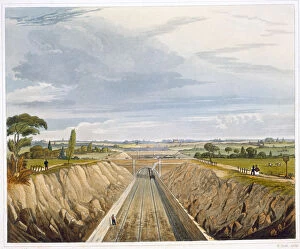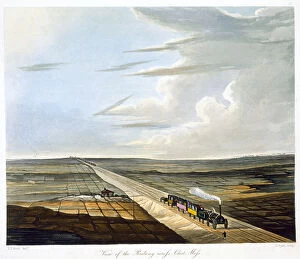Pyall Collection
"Exploring History Through the Art of Pyall: A Glimpse into Naval Forces, Travel
All Professionally Made to Order for Quick Shipping
"Exploring History Through the Art of Pyall: A Glimpse into Naval Forces, Travel, and Architecture" Step back in time as we delve into the captivating world depicted by artist Henry Pyall. From combined naval and military forces to picturesque landscapes, Pyall's artwork offers a window into various facets of history. In 1825, Pyall takes us to Burma with his creation "Combined Naval and Military Forces. " This stunning piece showcases the strength and unity of these two powerful entities. Moving on to George Hunt's "A Trip Up Loch Lomond, " painted in the same year, we are transported to the breathtaking Scottish Highlands. The serene beauty captured here invites us to embark on our own journey through this majestic landscape. "The Celebrated Tom Thumb, " dating back to around 1830, introduces us to an enigmatic figure whose fame has stood the test of time. Though created by an unknown artist, this portrait allows us a glimpse into popular culture during that era. It also turns his attention towards architecture with his depiction of Bedford Conservatories terrace at Covent Garden Market in Westminster. Painted in 1831, this artwork showcases both elegance and functionality within urban spaces. Henry Pyall's fascination with architectural marvels continues with his portrayal of "The new General Post Office" located in London's City district around 1830. This grand structure stands as a testament to progress and innovation during that period. Venturing beyond London city limits, Thomas Talbot Bury captures the essence of Liverpool and Manchester Railway through his painting titled "The Tunnel. " Completed in 1833, it highlights not only engineering triumph but also symbolizes connectivity between cities. Continuing along this railway line brings us face-to-face with scenes like "Taking in Water at Parkside" and "View of the Railway across Chat Moss. " These artworks from 1833 provide glimpses into everyday life surrounding transportation systems during that time.














